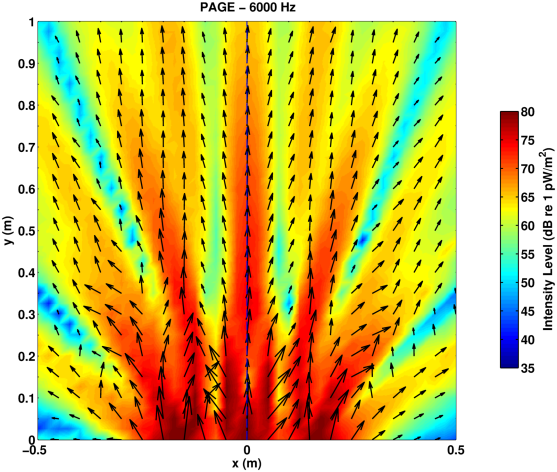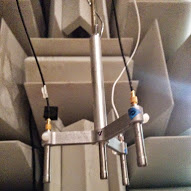Current Faculty: Kent L Gee, Tracianne B Neilsen
Article written by Darren Torrie

Several research projects here at BYU involve modeling high amplitude sound sources such as jets and rockets. Acoustic intensity is key calculation in making the modeling process more reliable. The intensity shows where the energy is flowing from the source, and then through processes such as acoustical holography the source can be recreated by working back to the source itself. This is especially important for jets and rockets because they are extremely loud and cover a broad range of frequencies, both infrasonic and supersonic.
The standard method that is used in acoustic standards today is the finite difference (FD) method, has a limited frequency range base on the microphone spacing of the probes used. Here at BYU a new method called the phase and gradient estimator (PAGE) method has been developed to improve our measurements of acoustical intensity so we can better model a wider range of sources.
We have been working on laboratory experiments to confirm that this new method does in fact improve the frequencies ranges of the calculated intensities. This was done in the anechoic chamber, where we set up an array of speaker and played white noise through them. Then we used a two-dimensional probe to take measurements in front of the speaker to calculate the resulting sound intensity field.
So far our initial scans have been promising, and the PAGE method has improved the frequency range beyond the limits of the FD method. There are some anomalous errors that the PAGE method has produced and so further experimentation and examination of the processing is necessary. Then once this has been refine and confirmed to be more robust, the next step will be to then use different probes of varying geometries and spacing to see if this will affect the PAGE method, before it can be more reliably used in any area of acoustics research that involves the calculation of acoustical intensity.

